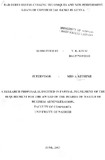| dc.contributor.author | Kiyai, T K | |
| dc.date.accessioned | 2013-05-14T13:13:05Z | |
| dc.date.available | 2013-05-14T13:13:05Z | |
| dc.date.issued | 2003-06 | |
| dc.identifier.citation | Masters Of Business Administration (MBA) Degree, University of Nairobi | en |
| dc.identifier.uri | http://erepository.uonbi.ac.ke:8080/xmlui/handle/123456789/22661 | |
| dc.description | A research proposal submitted in partial fulfillment of the
requirement for the award of the Degree of Master of
Business Administration,
Faculty of Commerce
University of Nairobi | en |
| dc.description.abstract | The 1990s passed as a decade in which commercial banks in Kenya experienced highs
and lows in terms of profitability and asset quality. While other sectors suffered major
losses due to the economic recession, the banks cashed in on high interest rates arising
from wrong monetary policies pursued by the government immediately before and after
the 1992 general elections.
It was however evident that the supernormal profits could not be sustained in the long
run. By mid-1990s, the banks were already experiencing problems with growing levels of
non-performing loans as customers become either unwilling or unable to service the high
interest rates and charges. Profitability started declining due to dwindling good lending
opportunities, lower interest incomes and high provisioning for bad and doubtful debts.
The banks were forced to institute strategies to deal with the non-performing loans if only
to survive in the long run. Most of them have established in-house divisions or
departments to restructure the bad loans. The government has also recognized that
economic turnaround can only be achieved if the banks are relieved from the bad debts
burden. Plans are therefore underway to set up a central agency to take over the bad debts
from the banks.
The study aimed at finding out the techniques used by the commercial banks in Kenya to
entice defaulting borrowers to resume servicing their obligations. It also aimed at
identifying their importance and preference and whether there is a relationship between
the restructuring techniques and the level of non-performing loans.
The general conclusion drawn is that banks use a combination of techniques ranging from
lowering interest rates and charges to providing addition loan facilities to distressed
borrowers (in special and rare circumstances). The study also found that banks are
placing increasing emphasis on restructuring of bad debts and that there is no significant
difference between the techniques used by the various categories of banks | en |
| dc.language.iso | en | en |
| dc.publisher | University of Nairobi | en |
| dc.title | Bad debts restructuring techniques and non-performing loans of commercial banks in Kenya | en |
| dc.type | Thesis | en |
| local.publisher | School of Business | en |

